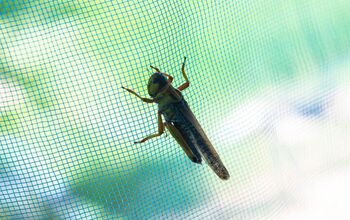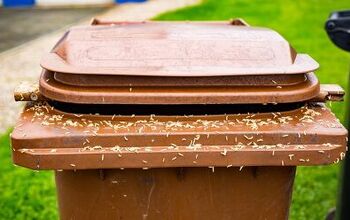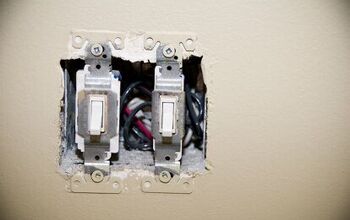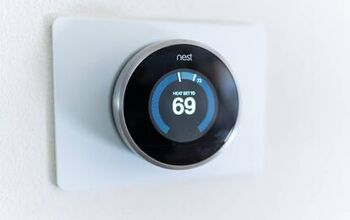Why Does My Paludarium Have White Spots?

The sight of any unusual change in your paludarium can be unnerving. White spots aren’t unusual in life, but they are weird to see in your paludarium. So, why does my paludarium have white spots?
White spots on fish in a paludarium are typically due to the Ichyophirius parasite. It’s a deadly parasite that reproduces quickly and can kill many fish in your tank if you don’t treat it. However, white spots on the glass in the upper part of your paludarium are likely just hard water stains.
Hard water is much more preferable to the Ich parasite. Luckily, the Ich parasite is treatable if you use chemicals like copper sulfate. Follow along as we explore why your paludarium has white spots and see how to treat it.
What Are The White Spots In My Paludarium?
The white spots in your paludarium are likely the Ichyophirius. This fast-spreading parasite can quickly reproduce and attach itself to the fish in your paludarium. Sometimes, Ichyophirius may be present in your paludarium without affecting the fish.
However, Ichyophirius (Ich) can easily prey on weak and stressed fish. The parasite continually multiplies until it overtakes your fish and soon you'll notice white spots on many or all of them. These white spots are quite noticeable, so it’s important to watch your fish closely each day.
Is Ich Dangerous To Fish?
Ichyophirius parasite, or Ich, is dangerous to fish. Sadly, fish can die from this parasite if you fail to treat them for it. Ich spreads quickly amongst fish in paludariums and standard aquariums.
The parasite can kill the fish in your tank within just a few days in many cases. White spots are the most common sign, but you can also identify ich by scale loss and unusual bruising. The infected fish in your paludarium will also become less active.
It’s important to carefully look at the other fish in your paludarium tank if you notice that one has white spots. Ich spreads much faster than you may think, so some of the other fish may have the parasite as well.
Can Hard Water Cause White Spots In A Tank?
The white spots in your paludarium tank may just be from hard water. For example, hard water is likely the cause if you only notice white on the glass in your paludarium. Hard water stains typically appear as dull streaks and smudges that are hard to remove.
Luckily, it’s easier to get rid of hard water stains than it is to get rid of the Ich parasite in a paludarium. The best way to get rid of hard water stains in a paludarium is to use vinegar. Of course, you can’t pour vinegar in the bottom part with the water.
Instead, put a little bit of white vinegar on a rag and blot the hard water stains in the top part of your paludarium. Next, take a rag soaked with purified, filtered water to scrub the stain away. It’s also a good idea to switch to a different water source for your paludarium. Otherwise, the hard water will persist and create more stains.
How To Get Rid Of White Spots In Your Paludarium
You must typically use a few treatments to get rid of white spots in your paludarium. Many people have great luck with Ich treatments if they catch the white spots early. That said, you may not be so lucky, so it’s important to have a few treatment plans, such as:
1. Add Aquarium Salt
Aquarium salt, also known as first aid salt, can help get rid of white spots in your paludarium. The Ich parasite thrives on stressed fish, and aquarium salt can reduce stress. It improves the quality of life for fish in a paludarium, and aquarium salt even helps them breathe.
That said, aquarium salt won’t get rid of white spots in your paludarium without help. You must use it in conjunction with chemical treatments. Moderation is also key with aquarium salt ,as it can harm fish if you use it too often.
2. Use A Chemical Treatment
Chemical treatments can quickly rid your paludarium of white spots. Copper sulfate is one of the best options for white spot treatment, especially if you have a big tank. However, you shouldn’t use copper sulfate if your paludarium already has a problem with algae.
Some people mistakenly use potassium permanganate to get rid of white spots in their tanks. However, that’s a bad idea as it can damage the fish if you use it too much. Daily treatments are typically required for Ich treatment, but that’s not an option with potassium permanganate.
That said, formalin is a great chemical treatment if your paludarium has white spots. It helps with everything from Clownfish disease to Ichyophirius, and it’s safe for fish. Today, you can find affordable white spot treatment sprays and fluids at Petco and Chewy for under $10.
3. Remove Carbon
Fish tank filters have carbon which is typically good, but not when your paludarium has white spots. The easiest way to do that is to pull the filter out of the tank for a moment. Open the filter and remove the carbon section, which typically features rocks or processed carbon.
Store the carbon pieces in a spot where you can easily find them again when you finish the Ich treatment. Put the filter back in the tank and run it like usual without the carbon until the white spots are gone. This is the standard protocol for many medical treatments for fish.
You may need to get a new filter without carbon pieces if you cannot remove it from your existing filter. Otherwise, your white spot treatments may not be effective, and the Ich may prevail.
Summing It Up
The white spots in your paludarium are likely the Ichyophirius parasite (Ich) if you notice them on fish. Ich is a deadly parasite that multiplies and quickly kills stressed or weakened fish. Otherwise, the white spots in your paludarium are likely due to hard water if they appear on the glass in the top, dry part of the tank.
Related Guides:

Nick Durante is a professional writer with a primary focus on home improvement. When he is not writing about home improvement or taking on projects around the house, he likes to read and create art. He is always looking towards the newest trends in home improvement.
More by Nick Durante



























